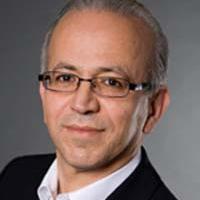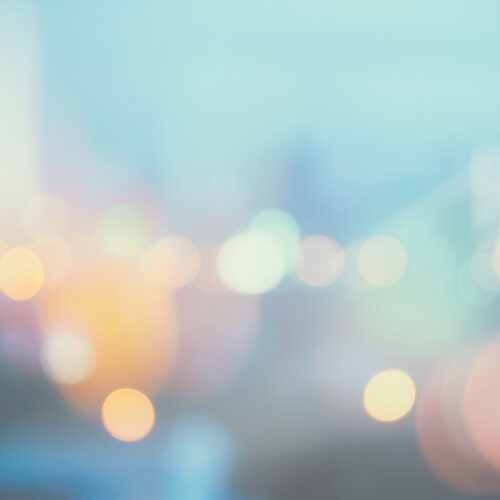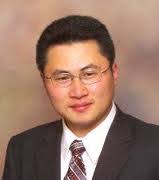Electric vehicles (EVs) and plug-in hybrid electric vehicles (PHEVs) have attracted worldwide attentions because of their capabilities to improve energy and environment sustainability. However, inconvenience of charging, high cost, short driving range, and safety concerns of the battery system have hindered the mass market penetration of EVs and PHEVs. This presentation will look at studies which address some of these issues with wireless charging technology.
This presentation will focus on wireless charging technology that helps eliminate the need of carrying cables and plugging in, and offer significant improvement in convenience and electric safety for EV and PHEV charging. Although Wireless Power Transmission (WPT) has been commercialized for consumer electronics and also investigated for EV wireless charging, the size, efficiency, and cost are key obstacles that prevent WPT from widely deployed. Our research in this area aims at novel designs that can considerably reduce size and cost while increase coupling coefficient and system efficiency.
After two years of study, two designs of the magnetic-resonance WPT chargers have been developed at UM-Dearborn. Vertically layered magnetic-resonance WPT charger instead of layering all components horizontally is proposed, where the components of the magnetic-resonance WPT charger are vertically layered. When compared to the horizontal design, the vertical design will be considerably thicker, requiring a larger space for positioning.
The investigators have presented detailed designs for major structures of the magnetic-resonance WPT charger. Laboratory prototypes have been made and 8kW power transfer has been achieved over 200mm distance with up to 96.5% DC-DC efficiency, with alignment tolerance of up to 300 mm. UM is working with Mia Motors and DENSO International to develop a prototype vehicle.
Chris Mi is a fellow of IEEE, Professor of Electrical and Computer Engineering at the University of Michigan, Dearborn, and the Director of the US DOE funded GATE Center for Electric Drive Transportation. He received the B.S. and M.S. degrees from Northwestern Polytechnical University, Xi’an, China, and the Ph.D. degree from the University of Toronto, Toronto, Canada, all in electrical engineering. Previously he was an Electrical Engineer with General Electric Canada Inc. He was the President and the Chief Technical Officer of 1Power Solutions, Inc. from 2008 to 2011. He is the Co-Founder of Gannon Motors and Controls LLC and Mia Motors, Inc.
His research interests are in electric and hybrid vehicles. He has taught tutorials and seminars on the subject of HEVs/PHEVs for the Society of Automotive Engineers (SAE), the IEEE, workshops sponsored by the National Science Foundation (NSF), and the National Society of Professional Engineers. He has delivered courses to major automotive OEMs and suppliers, including GM, Ford, Chrysler, Honda, Hyundai, Tyco Electronics, A&D Technology, Johnson Controls, Quantum Technology, Delphi, and the European Ph.D School. He has offered tutorials in many countries, including the U.S., China, Korea, Singapore, Italy, France, and Mexico. He has published more than 100 articles and delivered 30 invited talks and keynote speeches. He has also served as a panelist in major IEEE and SAE conferences.
Dr. Mi is the recipient of “Distinguished Teaching Award” and “Distinguished Research Award” of University of Michigan Dearborn. He is a recipient of the 2007 IEEE Region 4 “Outstanding Engineer Award,” “IEEE Southeastern Michigan Section Outstanding Professional Award.” and the “SAE Environmental Excellence in Transportation (E2T) Award.” He was also a recipient of the National Innovation Award and the Government Special Allowance Award from the China Central Government. In December 2007, he became a Member of Eta Kappa Nu, which is the Electrical and Computer Engineering Honor Society, for being “a leader in education and an example of good moral character.”
Dr. Mi was the Chair (2008-2009) and Vice Chair (2006-2007) of the IEEE Southeastern Michigan Section. Dr. Mi was the general Chair of the 5th IEEE Vehicle Power and Propulsion Conference held in Dearborn, Michigan, USA in September 6-11, 2009. Dr. Mi is one of the three Area Editors of the Editor of IEEE Transactions on Vehicular Technology, associate editor of IEEE Transactions on Power Electronics, Associate Editor of IEEE Transactions on Industry Applications, Senior Editor, IEEE Vehicular Technology Magazine, Guest Editor, International Journal of Power Electronics, Editorial Board, International Journal of Electric and Hybrid Vehicles, Editorial Board, IET Electrical Systems in Transportation, and Associate Editor of Journal of Circuits, Systems, and Computers (2007-2009). He served on the review panel for the NSF, the U.S. Department of Energy (2007–2010), the Natural Sciences and Engineering Research Council of Canada (2010), Hong Kong Research Grants Council, French Centre National de la Recherche Scientifique, Agency for Innovation by Science and Technology in Flanders (Belgium), and the Danish Research Council. He is the topic chair for the 2011 IEEE International Future Energy Challenge, and the General Chair for the 2013 IEEE International Future Energy Challenge. Dr. Chris Mi is a Distinguished Lecturer (DL) of the IEEE Vehicular Technology Society.
He is also the General Co-Chair of IEEE Workshop on Wireless Power Transfer sponsored by PELS, IAS, IES, VTS, MAG, and PES, Editor of IEEE Journal of Emerging and Selected Topics in Power Electronics – Special Issue on WPT, and steering committee member of the IEEE Transportation Electrification Conference (ITEC- Asian).




